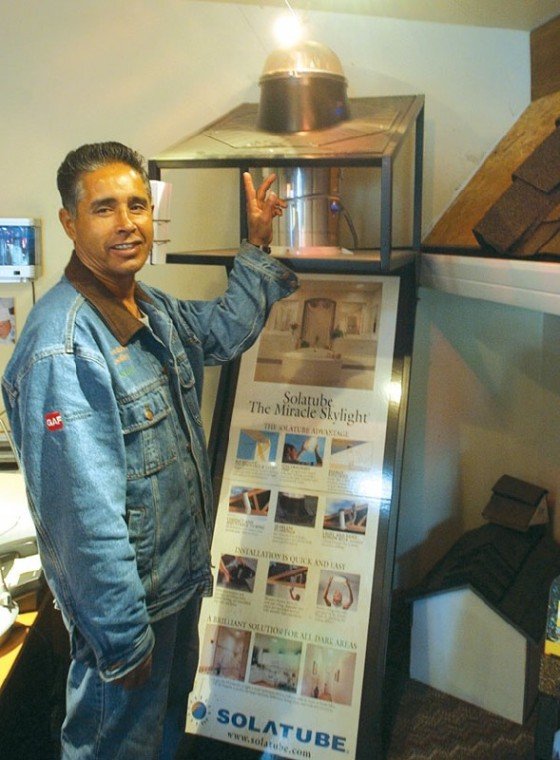They’re not as popular as they once were, but skylights are
still a bright, natural and energy-efficient way to light up a
home, especially now, as technology has taken care of a lot of
their previous problems.
They’re not as popular as they once were, but skylights are still a bright, natural and energy-efficient way to light up a home, especially now, as technology has taken care of a lot of their previous problems.
Where before there were leaky panels that released warm air into the frigid night and dripped rainwater incessantly, today there are motorized skylights that open with a touch of a button and close when they sense rain beginning to fall.
There are flexible tubes that function as instant light funnels and works of stained glass that can hang for decades without any visible signs of wear.
In new homes, the installation of traditional rectangular skylights remains steady, but in the market for older homes, newer solar tubes dominate the market, said Pamela Garcia, vice president of Affordable Roofing in Gilroy.
“The solar tubes don’t require any additional framing,” said Garcia. “The way it was designed was to fit between the beams of the roof. Normally, you have to brace the roof because you have to cut a support to get in a skylight, and you have to get the interior sheetrocked to finish it. With the solar tube, it’s all ready. Your only installation is the roof and the ceiling.”
Tubular shapes are also able to divert sun from less conventional areas since they don’t require a straight shot into the home. Instead, the tubes can be bent to funnel light to the spots where it’s needed most, said Paul Brummitt, president of South Valley Windows in Gilroy.
And domes are capable of diffusing light to illuminate an area of 200 to 400 square feet rather than just the area they directly shine on.
That doesn’t mean traditional skylights are passé by any means. The tubular shape, while the most cost-effective at around $500 with installation, offers no view.
For those with traditional skylights, whose installation runs about $1,500, nighttime can be a time for viewing the stars from a warm home.
The skylights themselves are far more energy efficient than they used to be, often available with dual-paneled glass and energy-saving windows. They can also be used to illuminate art pieces, like those that John Joy creates in his Scotts Valley studio.
The artisan, who apprenticed with a Scottish window maker creating church windows for 10 years, now creates leaded glass windows that can be both illuminated by the sun in the day and lit from within electrically at night.
“People spend a lot of time thinking in color schemes,” said Joy. “They pick out colors and fabrics and furniture, but a lot of times the ceiling can be an afterthought.”
Creating custom skylights, takes a while, though. Joy’s windows take three to four months each to complete, partially because he juggles 20 to 30 jobs at once.
They’re not cheap, either. A four-foot by four-foot skylight, completely installed, generally costs $1,400. A dome, eight feet in diameter and two feet high would be closer to $8,000.
“I sauter steel to the top side of the skylights and domes,” said Joy. “Any time you do a flat piece that’s has to lay horizontally, it adds difficulty to the project. It sounds like a lot of reinforcing, but I try to blend it with the pattern.”
Affordable Roofing installs nearly 100 skylights per year, said Garcia, but with the overwhelming array of vertical windows available today, skylights have taken a back-seat in the design world.
“In the old days, they used to put them in for light, to bring it into a dark room,” said Mateo Orozo, a sales representative at Johnson Lumber in Morgan Hill.
“Now they put, like, a thousand windows in houses, so you don’t need them as much.”
What’s necessary is timing. Garcia recommends installing skylights during re-roofing since the top of the house is already torn up, and Brummitt said it’s a must for traditional skylights as it reduces the chances they’ll leak.













